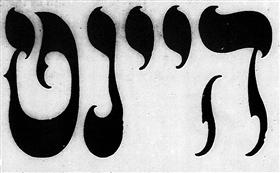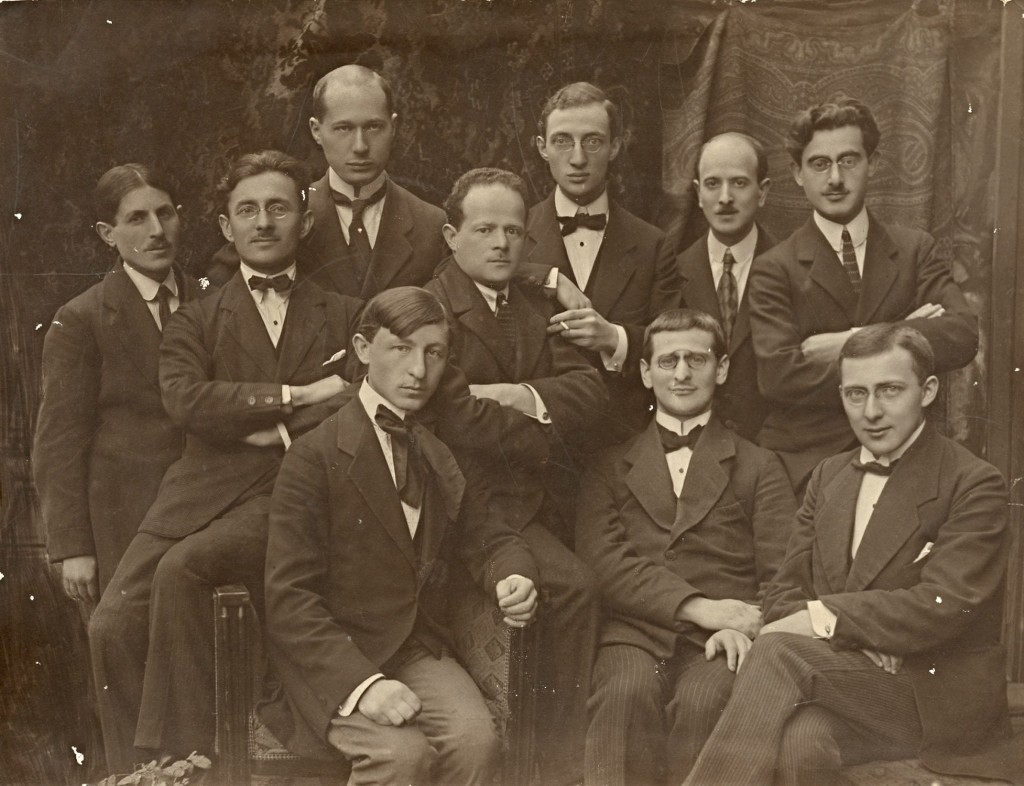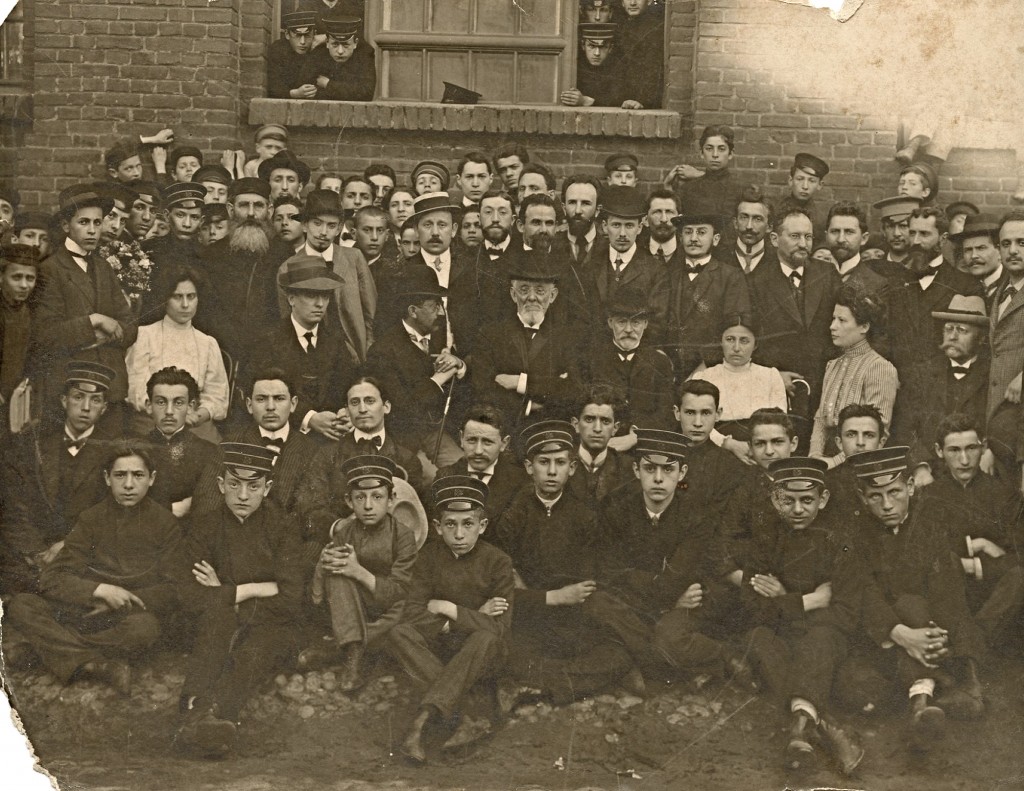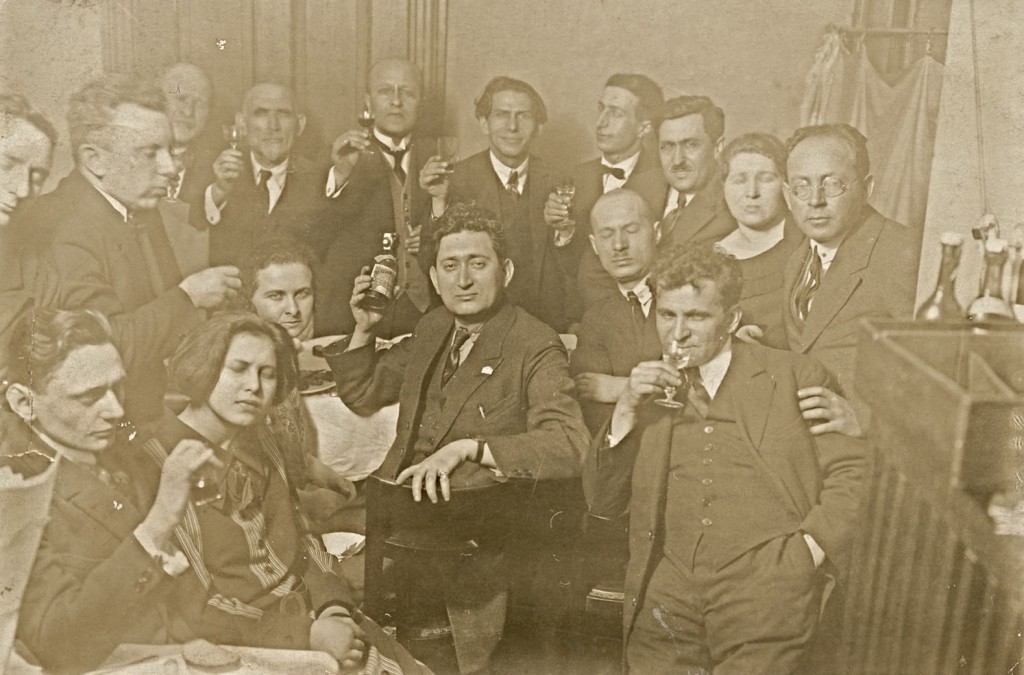Shimon Shpiegel was born in Lodz, and moved to Warsaw sometime around 1920. Here are some photos of him in Warsaw, with his writer friends and colleagues. See some documents about him here. He wrote for the Yiddish newspaper, Der Haynt.
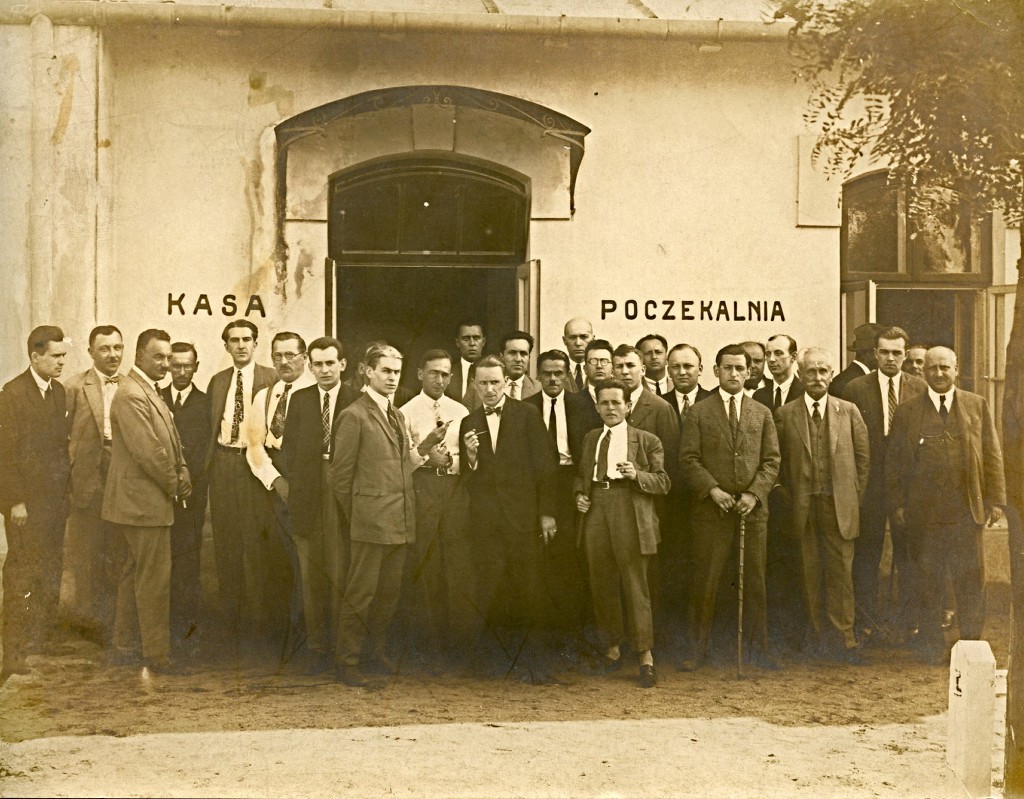
It's not clear who these people are. Shimone is the tallest person in the group. He is in the back row, and his head is near the letter P on the wall.
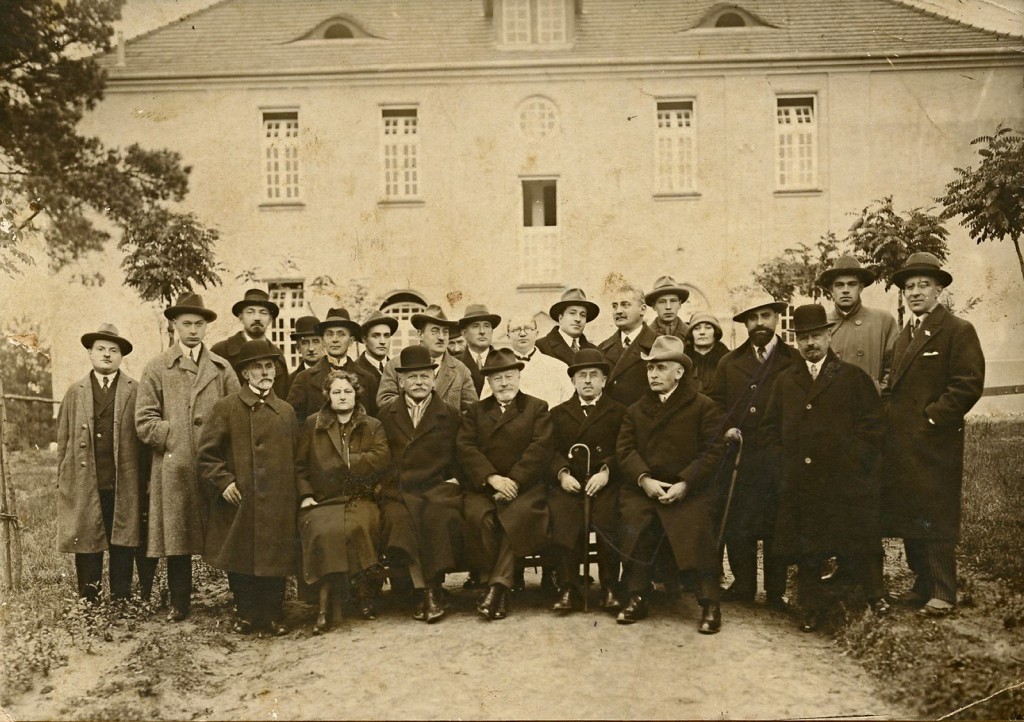
Here’s what YIVO says about Der Haynt:
Yiddish daily newspaper, published in Warsaw between 1908 and 1939. Haynt (Today) was one of the two longest running and most important Yiddish daily papers published in Warsaw in the early 1900s. In view of the success of the earlier popular and inexpensive Yiddish daily Idishes tageblat (1906–1910), its energentic editor, Shmuel Yankev Yatskan (1874–1936), founded Haynt with his associate publishers, brothers Noyekh and Nekhemye Finkelshteyn.
The newspaper’s new graphic layout immediately drew attention. The reader could quickly find what he or she wanted among its six columns, with headlines that spread over four columns of the front page, which also had short reports of only a few lines. The news items were most likely picked on the basis of interest and did not necessarily have any Jewish or local content. In the course of time advertisments made their way to the front page as well.
From its first years Haynt boasted an impressive list of authors and well-known writers such as Y. L. Peretz; David Frishman; Hillel Zeitlin; and Sholem Aleichem, a few of whose novels were serialized. The financial success of the paper even enabled it to maintain correspondents abroad. In 1925, it hired B. Yeushzohn (pseudonym of Moyshe Bunem Yustman); he was one of Jewish Poland’s most popular columnists.
Initially, Haynt was not politically affiliated with, but only sympathetic to, the Zionist cause. After World War I, the newspaper became the organ of the Zionist Organization of Poland and provided a platform for Yits?ak Grünbaum, Ozjasz Thon, and other leaders of Polish Zionism. Haynt engaged in an open struggle for the political, economic, and cultural rights of Jewish citizens, first in the Russian Empire and subsequently in Poland. Its fights against antisemitism brought it into frequent conflict with the censor. In 1920, Haynt merged with Dos yudishe folk, edited by Yits?ak Grünbaum; consequently, Yatskan left his position as editor in chief. The secretary of the editorial board, Avrom Goldberg (1881–1933), became, in effect, its new editor.
Haynt provided readers with weekly supplements devoted to literature, theater and the arts, sports, humor, and romantic novels. Occasionally it also included a women’s section, a health section, and advisory features for immigrants. The success of the paper, its substantial circulation (about 25,000 copies per day on average in the 1930s), and its profits encouraged the Finkelshteyn brothers to publish other periodicals, the most notable of which was the sensational noontime tabloid Hayntike nayes (1929–1939), whose circulation far exceeded that of Haynt itself.
During the world economic crisis, Haynt ran into serious financial and organizational problems, which were resolved when the paper was transformed into a cooperative called Alt-nay, in 1932. The new secretary of the editorial board was the journalist Khayim Finkelshteyn. Haynt continued to appear, in a reduced format, even during the first few days of the German invasion of Poland. Its last issue was published on the eve of Yom Kippur, 22 September 1939.
